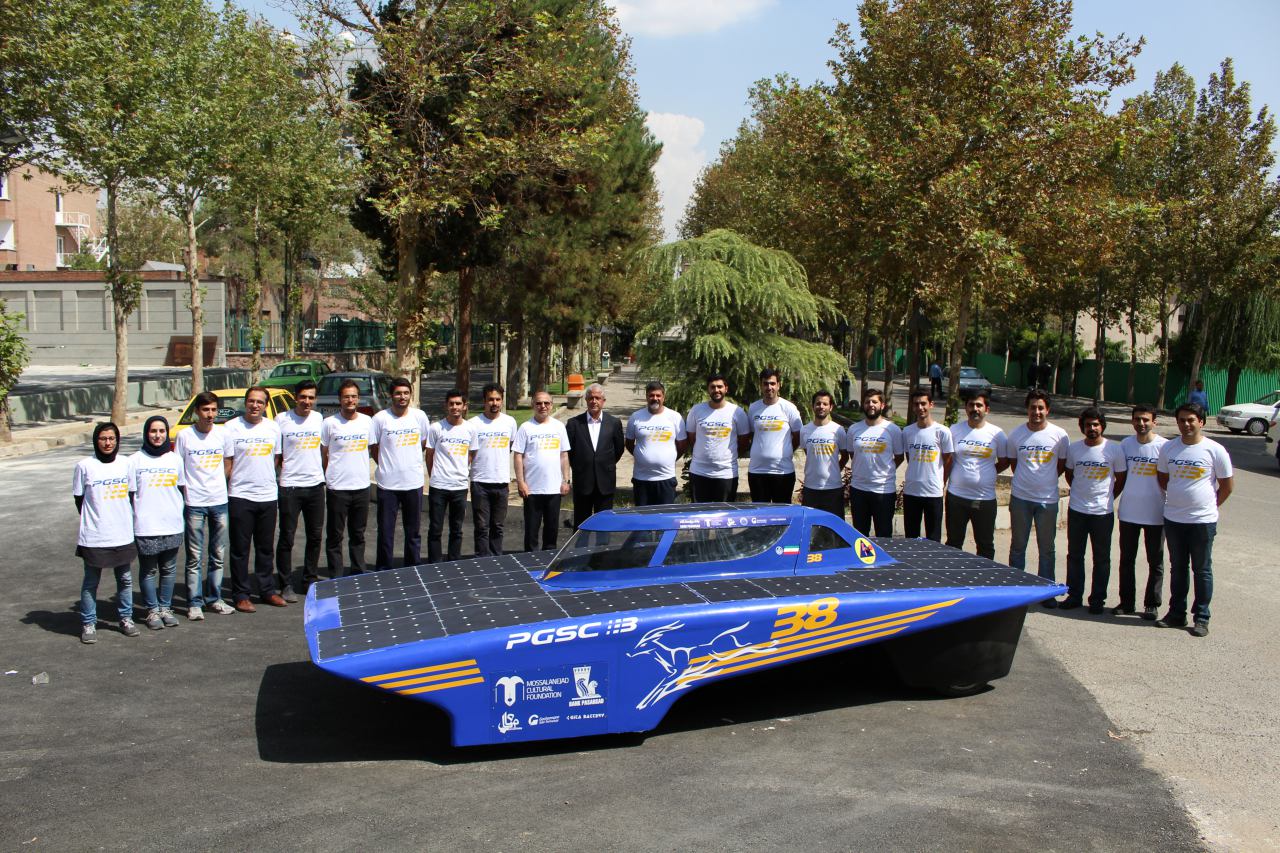A rare Iranian Gazelle embarked on a journey from the Caspian Sea last month.
Taking off from the port of Anzali, the third edition of Gazelle—a solar car manufactured by a university team—made its way down south to the Persian Gulf.
In every city it passed through, it made heads turn and caused a great deal of excitement among locals. Like any major technological product, the Gazelle was not created overnight.
“The initial idea for building a solar car first emerged in the 1990s and a proposal was submitted to the Ministry of Industries, Mining and Trade,” the head of the project, Karen Abrinia, told Financial Tribune in an exclusive interview.
Investing in solar cars was, however, not a priority for the ministry at the time.
In 1983, a group of university students studying mechanical engineering approached Abrinia who is a mechanical engineering professor at the University of Tehran.
They were seeking a subject to work on as an extracurricular group activity, thus the subject of designing and manufacturing a solar car once again surfaced.
The team started working on the project with the aim of participating in solar car races and rallies across the world.
Designing the Gazelle started in the winter of 2005 and after a few months, the quest for finding a sponsor began.
The team prepared a proposal and presented it at IKCO’s research center, “it took a lot of effort to get them to agree to invest in the project”, Abrinia said.
Leading domestic carmakers IKCO and SAIPA, the Iranian Fuel Conservation Company and the Research Development Fund provided funds for the first and second edition of the car. IKCO also provided research facilities for designing the first edition.
The private sector, represented by Bank Pasargad and Mosallanejad Cultural Foundation, also invested in the project. After spending about $200,000 over four months, the car was ready in the summer of 2005.
The first Gazelle was a three-wheel car: two wheels in front and one at the back. It ran on an in-wheel electric engine. The solar cells were placed on top of the car and provided the needed solar energy.
This marked the first solar car ever to be built in Iran and the Middle East; the news spread fast across the world.
The team even received an invitation from Massachusetts Institute of Technology to create a confederation that would focus on building four different types of cars with 15 other teams.
Iran did not attend, however, as it was denied an entry visa by the United States.
Beyond Borders
In 2006, the Iranian team attended its first solar car rally in Taiwan and proceeded to work on the second edition of the vehicle, which was completed in 2009.
In 2011, the team took part in a 3,000-kilometer-long rally that started from Darwin in the north of Australia all the way down to Adelaide in the south.
The second edition was built according to standards set forth by the Australian Solar car challenge. It received several improvements: it was chassis-less and about 40% lighter than Gazelle I.
The average speed of the second edition was 80 kilometers per hour up from the first edition’s 60 kph. On a full battery, the car can run for three hours on a flat road and takes about three hours for the battery to get fully charged.
According to Abrinia, “regulations set by the Australians once every two years show that they are trying to usher the solar-car designs toward commercial production”.
Gazelle III was built in 2015 and took part in the Australian Solar Challenge where a total of 40 teams from 25 countries had taken part. The biggest difference in the third model was that it was a two-seater and had four wheels, closer to the design of commercial vehicles.
Abrinia said the team also hopes to take part in the 2017 rally and is designing Gazelle IV for the upcoming event.
Gazelle IV will have two electric engines and four wheels, and accommodate four passengers.
Design Center
The team has also set up a Gazelle design and manufacturing center as a small company in UT’s Science and Technology Park.
The center has prepared a proposal for designing and building a super-light 2-seater car appropriate for use in large cities such as Tehran.
Three variations have been proposed: a gasoline-powered car that consumes only 3 liters of gasoline for every 100 kilometers, a zero-emission, fully electric car and a gasoline/electric hybrid that consumes 2 liters of gasoline over 100 kilometers.
“The conceptual designs have been completed and we are looking to attract local or foreign investors,” Abrinia said.
This spring, a six-member delegation from Iran-France Chamber of Commerce showed interest in the project, one of which was from an investment company.
According to the professor, the proposal for building and commercializing Gazelle IV has also been presented to the Vice Presidency’s Office of Science and Technology Affairs, which has expressed interest.
The Tour and Future Plans
The team’s head of sponsorship, Amirhossein Abrinia, said the Gazelle III tour was organized to raise awareness on environmental issues and pursue the commercialization of the product.
Starting from Bandar Anzali, the Gazelle made its way to Qazvin, Tehran, Kashan, Isfahan, Shiraz, Yazd and Bandar Abbas, eventually completing 2,175 kilometers at Kish Island in the Persian Gulf.
In every city, the team would hold three-hour events and introduce the car to the public. The team received plenty of constructive feedback.
There’s no doubt that there will come a day when fossil fuel resources will go dry and we must be prepared.
Amirhossein said measures must be taken to eventually replace the current cars with hybrid and solar cars.



